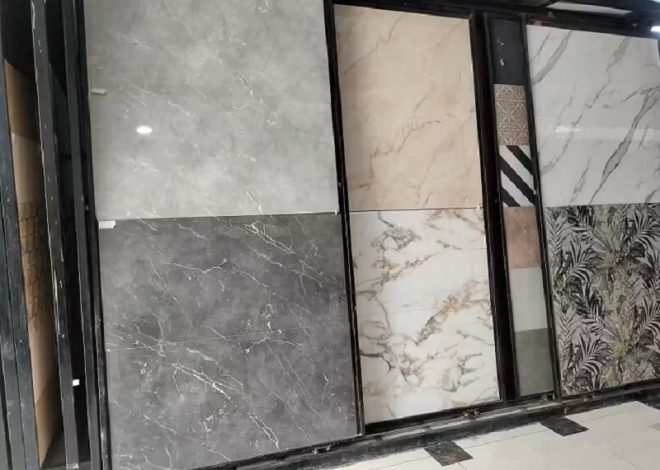
8 Signs Your Home is At Risk of A Carbon Monoxide Leak
Dear reader, take a moment to imagine a predator waiting in the dim shadows of your very own home, seeping into your lungs undetected and slowly extinguishing your precious life force. This predator, my friend, is carbon monoxide, and its lethal potential cannot be underestimated.
Today, we delve into the heart-wrenching reality that nearly every home is at risk of a carbon monoxide leak. Brace yourself as we explore the silent killer that may be lurking in your sanctuary at this very moment. This blog post acts as a wake-up call, urging you to recognize the signs of danger because ignorance is no defense against this invisible menace.
1. Absence of a Carbon Monoxide Detector:
The absence of a carbon monoxide detector increases the risk of not being alerted to a CO leak. The incomplete combustion of fossil fuels, such as gas, oil, and coal, produces carbon monoxide. It can be emitted by appliances like furnaces, water heaters, stoves, and even cars in the garage. Without a detector, you won’t be able to detect the presence of this deadly gas until it’s too late.
The consequences of a carbon monoxide leak can be severe. Exposure to high levels of CO can lead to symptoms such as headaches, dizziness, nausea, confusion, and even loss of consciousness. Prolonged exposure can be fatal. The scariest part is that you won’t even know it’s happening without a detector.
Installing a carbon monoxide detector is a simple and effective way to protect your home and your family. These devices are designed to sound an alarm when they detect high levels of carbon monoxide in the air. This early warning can give you valuable time to evacuate your home and seek medical attention.
2. Malfunctioning or Expired CO Detectors:
Regular maintenance and testing of your carbon monoxide detectors are crucial to ensure their proper functioning. First, familiarize yourself with the manufacturer’s guidelines for your specific CO detectors. These guidelines will inform you on how often you should test your detectors and how frequently the batteries should be replaced.
Testing your carbon monoxide detectors is a simple process. Most detectors have a button that you can press to initiate the test. When you press the button, the detector should emit a loud, piercing sound. If the detector does not sound, it may malfunction, and you should replace it immediately. It’s important to note that testing your detectors only checks the audible alarm; it does not verify the sensor’s accuracy. For this reason, it is recommended to replace your detectors every 5-7 years or as recommended by the manufacturer.
3. Yellow or Flickering Gas Burner Flame:

A yellow gas burner flame indicates incomplete combustion, meaning the gas is not burning efficiently. Various factors, such as a clogged burner or a faulty air-to-gas ratio, can cause this. When combustion is incomplete, potentially harmful byproducts, including carbon monoxide, can be released into the air. Carbon monoxide is an odorless and colorless gas that can be extremely dangerous if inhaled in high concentrations.
A yellow or flickering gas burner flame should never be overlooked, as it could indicate incomplete combustion and the potential presence of carbon monoxide. You were understanding the significance of a blue flame, and taking prompt action if you notice any abnormalities can protect your home and loved ones from the risks associated with carbon monoxide leaks.
4. Soot or Stains Around Appliances:
Soot or black stains around appliances should never be ignored, as they can indicate a carbon monoxide problem. Carbon monoxide is a byproduct of incomplete combustion, and the presence of soot or stains suggests that the combustion process is not functioning optimally.
Carbon monoxide is a silent killer, as it is both odorless and colorless, making it impossible to detect without proper monitoring equipment. Therefore, it is essential to recognize the signs of incomplete combustion, like soot or stains, to prevent potential carbon monoxide leaks. Radon is an invisible gas available in your home. Radon measures in Rogaland (Radontiltak i Rogaland) are at an all-time high. This is because the rock in Rogaland is rich in uranium.
5. Excessive Condensation on Windows:
One of the less obvious but significant indicators of a potential CO leak is excessive condensation on the interior surface of your windows. When warm, moisture-laden air comes into contact with a cold window surface, it can cause condensation. However, if your windows consistently exhibit excessive condensation, it could be a sign that the humidity levels in your home are too high.
Excessive condensation on your windows should not be taken lightly, as it could indicate a potential carbon monoxide leak. By understanding the dangers associated with CO and recognizing the warning signs, you can take proactive measures to protect your home and loved ones. Remember that your family’s safety should always be a top priority, and any suspicions of a CO leak should be addressed immediately by a professional.
6. Stale, Musty, or Unusual Odors:
Carbon monoxide (CO) is a colorless, odorless, and tasteless gas produced when fuel is burned incompletely. Common sources of carbon monoxide in homes include furnaces, water heaters, fireplaces, stoves, and generators. When these appliances are not functioning properly or are not adequately ventilated, they can release this dangerous gas into your home.
While carbon monoxide itself is odorless, other gases and byproducts of combustion can produce unusual smells. These odors can warn that something is wrong with your fuel-burning appliances. If you notice stale, musty, or unusual odors in your home, particularly near these appliances.
7. Headaches, Dizziness, Nausea, or Fatigue:
Carbon monoxide poisoning can be dangerous because its symptoms often resemble flu-like symptoms. Headaches, dizziness, nausea, and fatigue are all common signs of the flu and CO poisoning. This can make it difficult to differentiate between the two, especially during the winter when flu cases are more prevalent.
However, one key difference can help you determine if your symptoms are due to a CO leak. If you notice that your symptoms improve when you leave your home and reappear upon returning, it may indicate a carbon monoxide leak. This is because fresh air helps dissipate the CO gas, temporarily relieving the symptoms. But once you return to the contaminated environment, the symptoms will return.
8. Increased Incidents of Illness in Household Members
Carbon monoxide poisoning can occur when there is a leak in appliances such as gas stoves, furnaces, water heaters, or even fireplaces. When these appliances malfunction or are not properly ventilated, they can release carbon monoxide into the air, leading to potential health risks for everyone living in the household, including your beloved pets.
So, how can you identify whether your home is at risk of a carbon monoxide leak? One of the key indicators is the increased illness incidents among household members or pets. Suppose you notice a pattern where multiple individuals or animals in your home experience flu-like symptoms such as headaches, dizziness, nausea, fatigue, confusion, or even shortness of breath. In that case, it’s crucial not to overlook these signs.
It’s essential to pay attention to the timing and duration of these symptoms. Are they occurring more frequently during specific times of the day or night? Do they subside when you or your pets leave the house? If the answer is yes, it’s time to take immediate action.
Summary
Carbon monoxide is a silent but deadly threat that exists in our everyday lives. Throughout this blog post, we intended to draw your attention to the seriousness of this issue and how it relates to you as a reader.
By identifying the warning signs and taking immediate action to mitigate any potential risks within your home, you can safeguard your loved ones from harm.



